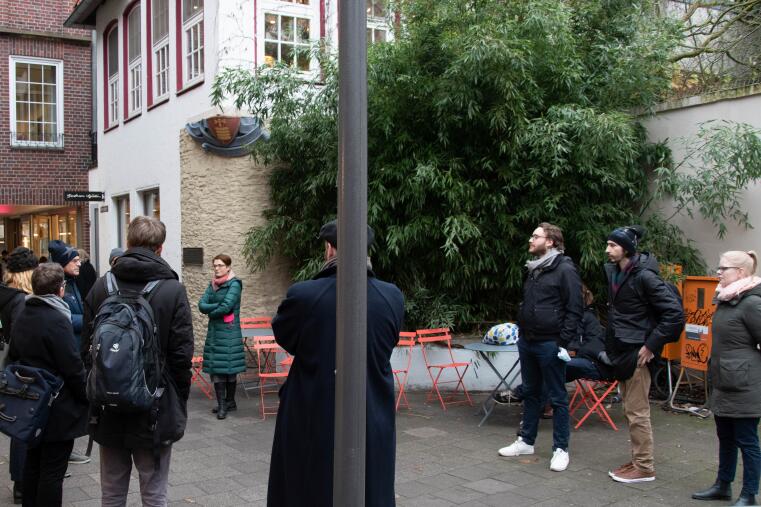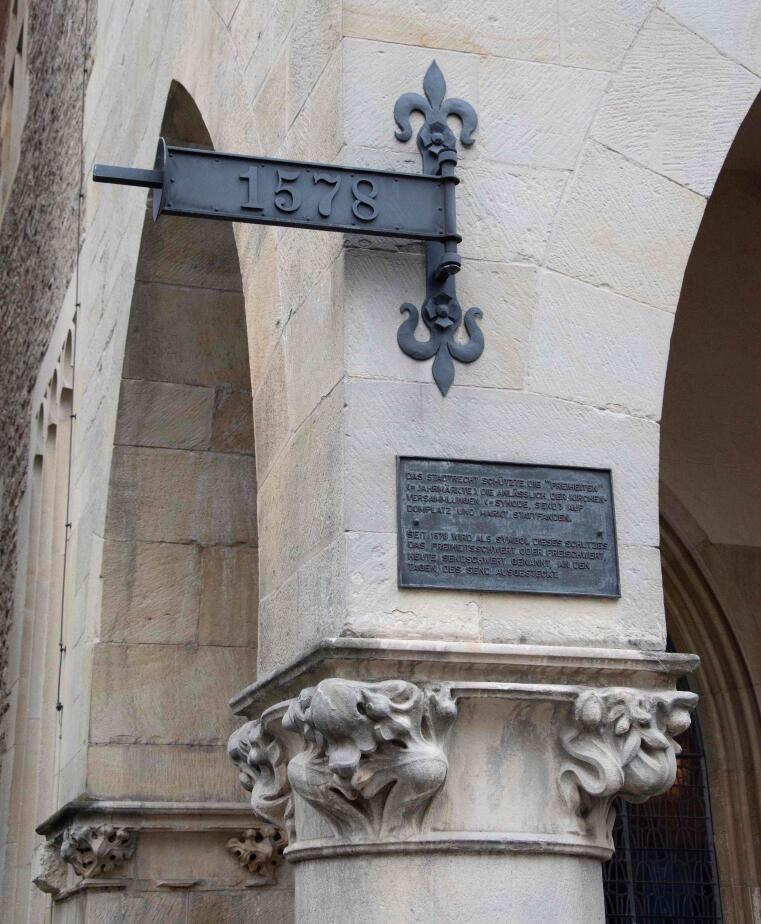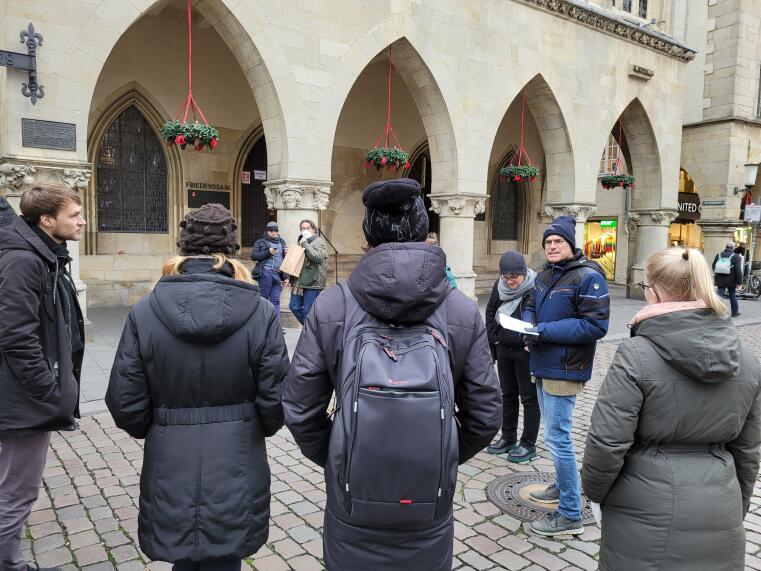Where legal history becomes visible
Impressions from the city tour of Münster
by Lennart Pieper
On 24 November 2021, Kolleg director Peter Oestmann took the new fellows on a city tour of Münster that was as educational as it was entertaining. In addition to providing information on the obligatory sights such as the town hall, where the Peace of Westphalia was concluded, and the Lamberti Church with its three cages for the Anabaptists, Oestmann also talked in depth about the legal history of the city.
What can be seen particularly well in Münster is the spatial separation between Domfreiheit as the area of ecclesiastical jurisdiction around the cathedral on the one hand, and the surrounding town on the other. Whereas the district was separated by a wall in the Middle Ages, remains of which can still be discovered, the transition is also marked today by an eye-catching gateway, which was created during the 1987 Skulptur Projekte exhibition. In the 12th century, the municipal council also seized the opportunity to demonstrate the beginning of its sphere of power by building a magnificent town hall within sight of the cathedral. Oestmann reported in this context on one of Münster's earliest town maps, which was used as evidence in a criminal trial. A witness had to mark the exact location of the crime so that the question of whether it had taken place inside or outside the domain of cathedral immunity, a question that had implications for jurisdiction, could be reconstructed.

Rivalry between different courts was also a subject in the "Paradise", the richly decorated porch at the main portal of the cathedral. In the Middle Ages and early modern period, the lay judges of the ecclesiastical court, the so-called Offizialat, met here under the colossal stone sculptures of the apostles and Christ Pantocrator. In the 1570s, Bishop Johann von Hoya, who had been an assessor at the Imperial Chamber Court in his younger years, also founded a secular court. Behind this was the desire to achieve greater independence from the Archbishopric of Cologne, to which cases until then had to be directed. Since the court was abolished again by his Wittelsbach successors, who were also Archbishops of Cologne in personal union, Bishop Christoph Bernhard von Galen made another attempt about a century later with the establishment of a court of appeal (Revisionsgericht). Oestmann comments: "Münster's territorial autonomy was asserted through judicial plurality”.

After a brief tour of the town hall with its famous Friedenssaal and the Sendschwert as a symbol of the town’s legal freedoms, Oestmann finally talked under the eyes of the statue of Freiherr Franz von Fürstenberg about the difficult beginnings of the University of Münster: Pope and Emperor had bestowed upon the town the privilege of founding its own university as early as 1631. But the project failed for lack of money, and it was not until 1780 that Fürstenberg founded the university. Just 38 years later, though, the new university was downgraded under King Frederick William III to the rank of an academic teaching institution, and did not regain its university status until 1902. "Prussia was often not particularly fond of Catholic Münster," says Oestmann. Important institutions such as the Higher Regional Court (Oberlandesgericht) and not least the railway junction were at that time taken away from the city and relocated elsewhere.
Despite these setbacks experienced by the city, the fellows were fascinated by the richness of Münster’s history. It became particularly apparent during the guided tour how many legal-historical features have left their traces in the cityscape – they just have to be unearthed.



